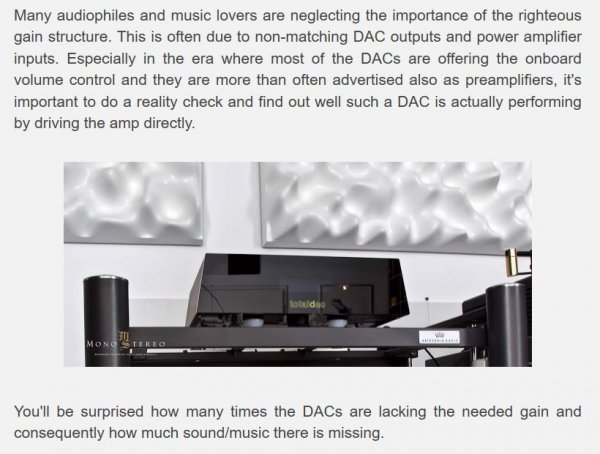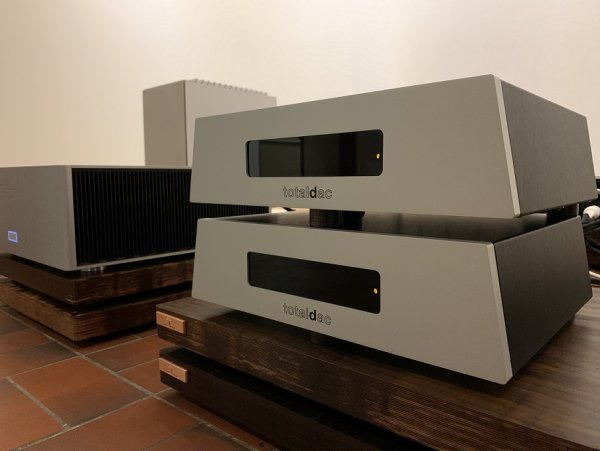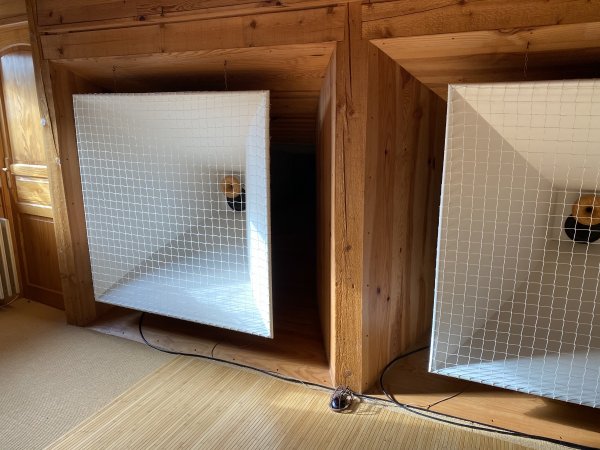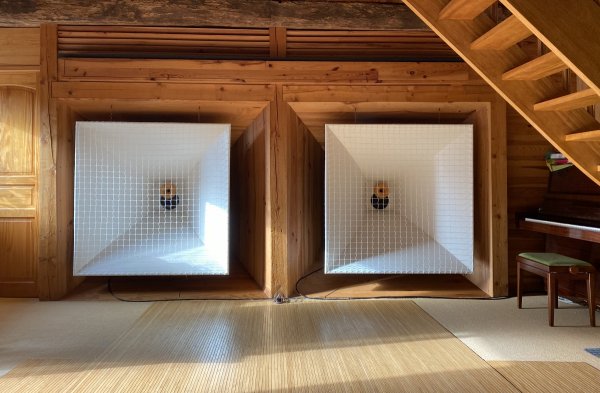I am not in the habit of starting threads unless I feel a product is of significant enough importance to do so. The Totaldac D1-Driver is such a product. The official product description states D1-Driver, the amplifier driver. I have deliberately added (pre) in the thread title.
The Totaldac website description reads:
It was designed for directly driving a power (or integrated amplifier!) using the built in Totaldac digital volume control:
Around 6 weeks ago we travelled to Slovenia to deliver a SGM Extreme server to Matej Isak for a review. I ended up leaving being deeply impressed by the liveliness and dynamic range of Matej's reference system. Upon asking Matej told me something about the importance of proper gain matching. I did not give it much further thought until we visited forum member Mike Lavigne a few weeks later where he played a few tape cuts with a similarly shocking display of brute force dynamic range. Every since returning I have been searching for explanations for this particular phenomenon. Until I received a pair of Totaldac D1 drivers from Vincent last Friday.
I need to add a bit of history context to this now as I was not unfamiliar with the D1-driver. I have tested an older version before, the current D1-driver is in its second generation now. At that time I was impressed by its dynamic range and transparency, but found it lacking in refinement and micro detail rendering compared to my AudioNet Stern (Euro 35.000) preamplifier. If I remember correctly my commentary to Vincent was "a diamond in the rough". It also did not manage to match the Stern's sound staging abilities, upon which Vincent commented I would probably need a pair to get there. I shipped it back and did not give it much further thought, therefor the penny did not drop until Vincent told me he had a MK2 version of which he was confident it would solve my "issues" and if I would be interested in trying a pair of them. This turned out to be a totally different ballgame. Not only does it manage to match the Stern's sound staging abilities, refinement and micro detailing, it has also improved upon its previous strengths with even better dynamics, and an "Iron grip" control over the lower registers which sounds like it has doubled the already high damping factor of my AudioNet Heisenberg power amplifiers. It has incredible control and slam, at first I thought it was lacking low end extension, but after some back and forth switching it is just much better defined and controlled turning a mass of "1 tone bass" into a variation of cues and pitches. It does give me the eagerly desired dynamic range I found my system lacking of after hearing Matej's digital and Mike's tape. Therefor I consider it to be a substantial product worthy of its own thread.
Using both the Stern and D1 drivers in a DAC - Driver - Preamp configuration does preserve most of these qualities with just a slight decrease in overall transparency, clarity and a loss of ultimate "control". Inserting the Stern creates a slightly more distant, slightly more laid back perspective, where just the drivers give you a closer more direct perspective.
Matej Isak has reviewed the D1-direct and D1 driver here, worth a close read:
https://www.monoandstereo.com/2019/09/totaldac-d1-direct-d1-seven-d1-driver.html
I will copy a few relevant snippets:



To summarize, this is a product to seriously consider, not just to combine with a Totaldac DAC, and not only to replace a preamplifier. But consider trying it with any brand DAC and/or any Pre-amplifier.
The Totaldac website description reads:
The d1-driver is an analog driver. It is usually connected to the output of the DAC.
It is an answer to the endless question "is it better with or without preamp?".
The strength of preamps is there active stage more than their volume control. The active stage helps driving the power amp.
It was designed for directly driving a power (or integrated amplifier!) using the built in Totaldac digital volume control:
Its drive capability allows the d1-driver to improve the sound of a DAC, improving bass control, articulation, presence, soundstage and life. It has been tested when connected between a DAC and a power amplifier (transistor or tube), but also between a DAC and an integrated amplifier. The d1-driver has no volume control because it relies on the DAC volume control.
Around 6 weeks ago we travelled to Slovenia to deliver a SGM Extreme server to Matej Isak for a review. I ended up leaving being deeply impressed by the liveliness and dynamic range of Matej's reference system. Upon asking Matej told me something about the importance of proper gain matching. I did not give it much further thought until we visited forum member Mike Lavigne a few weeks later where he played a few tape cuts with a similarly shocking display of brute force dynamic range. Every since returning I have been searching for explanations for this particular phenomenon. Until I received a pair of Totaldac D1 drivers from Vincent last Friday.
I need to add a bit of history context to this now as I was not unfamiliar with the D1-driver. I have tested an older version before, the current D1-driver is in its second generation now. At that time I was impressed by its dynamic range and transparency, but found it lacking in refinement and micro detail rendering compared to my AudioNet Stern (Euro 35.000) preamplifier. If I remember correctly my commentary to Vincent was "a diamond in the rough". It also did not manage to match the Stern's sound staging abilities, upon which Vincent commented I would probably need a pair to get there. I shipped it back and did not give it much further thought, therefor the penny did not drop until Vincent told me he had a MK2 version of which he was confident it would solve my "issues" and if I would be interested in trying a pair of them. This turned out to be a totally different ballgame. Not only does it manage to match the Stern's sound staging abilities, refinement and micro detailing, it has also improved upon its previous strengths with even better dynamics, and an "Iron grip" control over the lower registers which sounds like it has doubled the already high damping factor of my AudioNet Heisenberg power amplifiers. It has incredible control and slam, at first I thought it was lacking low end extension, but after some back and forth switching it is just much better defined and controlled turning a mass of "1 tone bass" into a variation of cues and pitches. It does give me the eagerly desired dynamic range I found my system lacking of after hearing Matej's digital and Mike's tape. Therefor I consider it to be a substantial product worthy of its own thread.
Using both the Stern and D1 drivers in a DAC - Driver - Preamp configuration does preserve most of these qualities with just a slight decrease in overall transparency, clarity and a loss of ultimate "control". Inserting the Stern creates a slightly more distant, slightly more laid back perspective, where just the drivers give you a closer more direct perspective.
Matej Isak has reviewed the D1-direct and D1 driver here, worth a close read:
https://www.monoandstereo.com/2019/09/totaldac-d1-direct-d1-seven-d1-driver.html
I will copy a few relevant snippets:



To summarize, this is a product to seriously consider, not just to combine with a Totaldac DAC, and not only to replace a preamplifier. But consider trying it with any brand DAC and/or any Pre-amplifier.
Last edited by a moderator:












